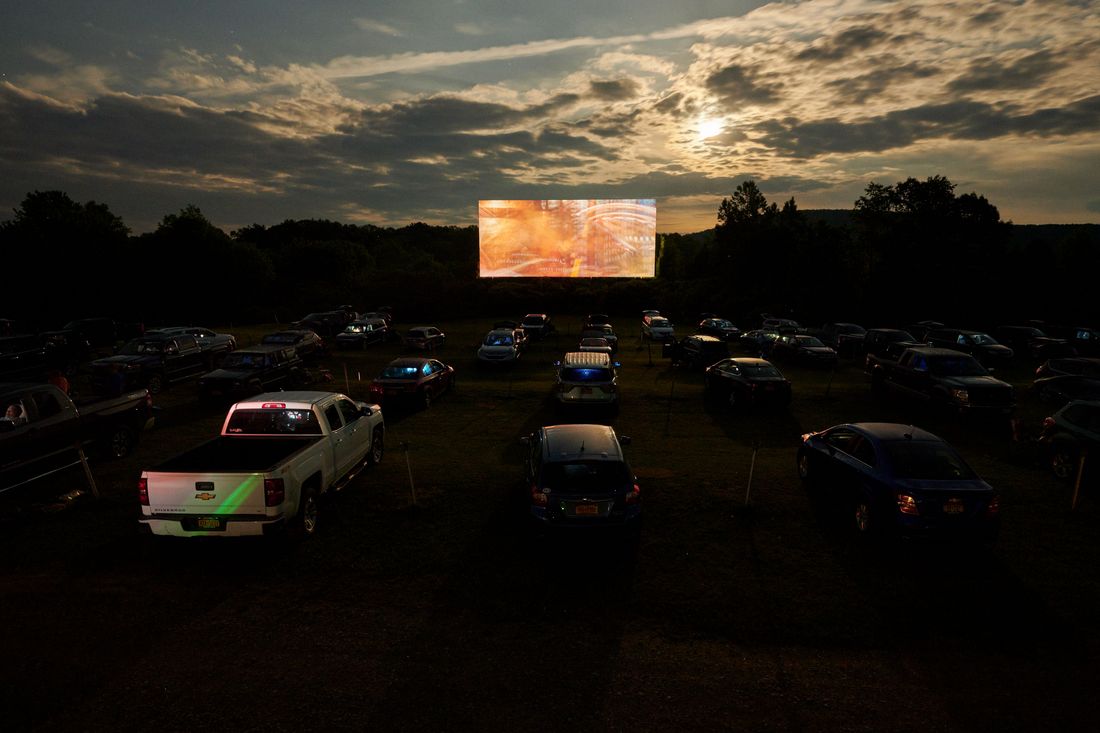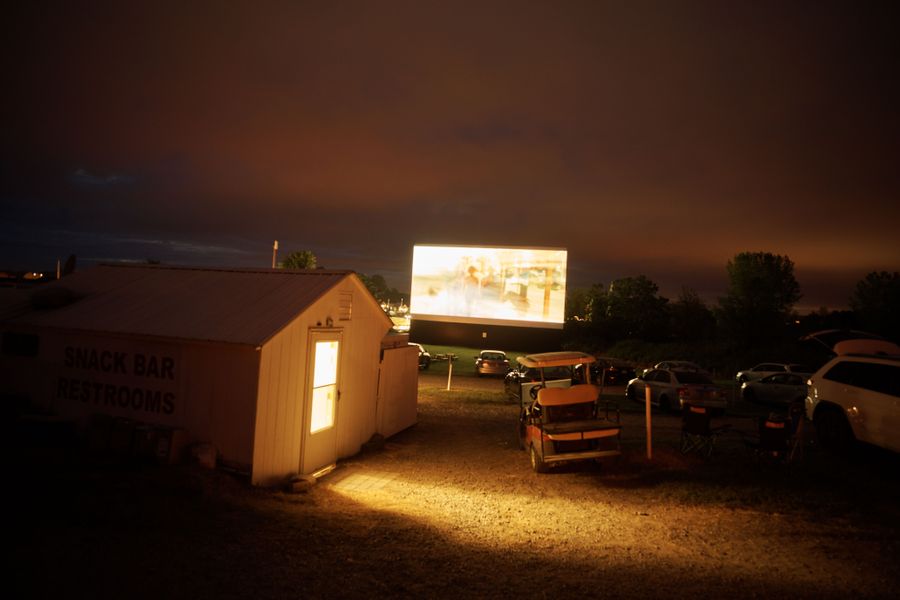
In May, around two months into shelter-in-place, the masses were becoming increasingly restive. Happily, that’s also when drive-in movie theaters opened up, the first social-oriented businesses to do so. Though drive-ins may have become the go-to spot for recreation in the time of COVID-19, they’ve long been considered a relic of bygone Americana. Photographer Devin Doyle — who has captured rodeo culture in Mexico and was in the middle of shooting racetracks in upstate New York when isolation was just starting — immediately felt an affinity for these theaters because they, like his other subjects, are similarly steeped in nostalgic images of expansive, rural areas. What’s more, they function as bastions of entertainment that thrive on collective energy.
“I was lucky to be able to hide out in a small town upstate during the lockdown. I had been photographing the small racetracks up here the past few years [and was] drawn to the remote locations, the light, the dust in the air, and the drama of the races and the wrecks. When it was announced that drive-ins were going to be the first to be allowed to open, I imagined a lot of aesthetic similarities. They’re also very much destinations. People make a purposeful trip to visit these places. They’re invested,” Doyle muses.
Before the pandemic, the photographer was constantly on the road and had just shot three projects in a span of ten days. Once the quarantine began, that swiftly changed. “Not being able to travel, I’ve had to learn to stay put and make images in my backyard. Travel is a great motivator (or crutch) to make work, and I have had to learn to be still and work in place.”
Doyle even had to rethink the logistics of how he photographed. He shared that he typically liked to be as close as possible to his subjects, which was immediately challenged by social-distancing policies and new norms. “It’s hard to be empathetic towards this masked, anonymous face. I try to be really smiley and disarming and friendly when I’m talking to strangers. But as soon as you put that mask on, you’re up to your eyes and people have a hard time reading your intentions. It’s kind of like a Halloween mask. So I tried to project my voice through it to express intent. It was strange to shoot, but people seemed relieved to get out of the house and stretch their legs, see their friends, and just be around others.”
This desire to be around others serves as the connective tissue of the series. The arresting final images, which capture pajama-clad teenagers posing with friends and aerial shots during golden hour when the screens blend into the sky and cars are lined in clustered rows, visually depict a recent rediscovery of human interaction and the emotional satiation we derive from these bonds, regardless of how deep they run.
“We take such pleasure from the company of others, that even if we have to be isolated in our little car bubbles, even in the face of risk, we seek that experience of communion, as simple as chatting in line for popcorn. Sharing a film with others is like going on an expedition together. [It’s] a genuine adventure.”
Below, images from the series.





















